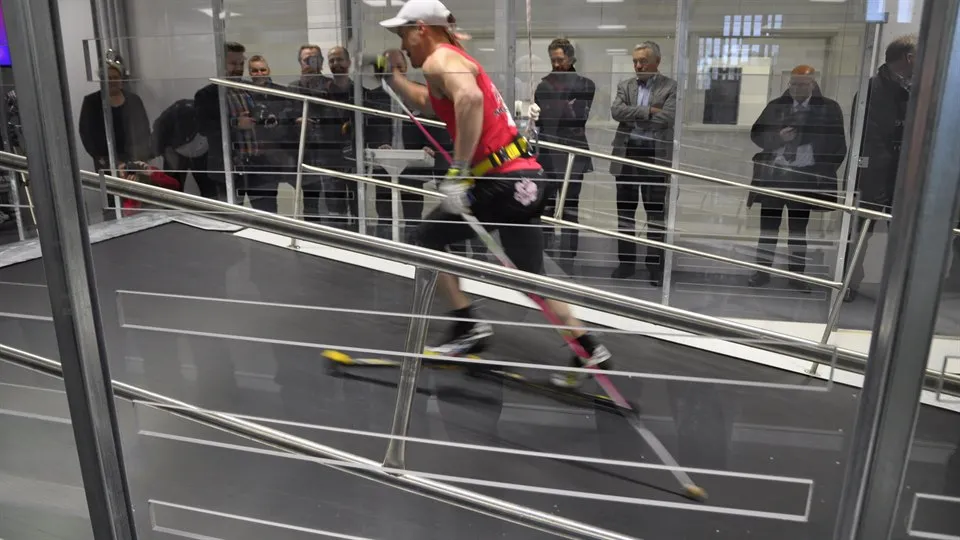Wind tunnel
The wind tunnel houses one of the largest treadmills in the world, an enormous fan and advanced climate function allowing for groundbreaking research and testing of various materials and products in a realistic environment.
The ability to test clothes, shoes, tents and other sports- and outdoor equipment in the same condition as in the ones in which they will be used is a vital aspect of product development. The wind tunnel is a controlled environment which enables us to study the impact wind, moisture and movement has on materials, products and humans in interaction with equipment.
The lab includes a 180 feet treadmill that can be used by several people simultaneously, as well as tilted. The equipment calculates and adds headwind based on the speed and gradient. For example two cyclists can ride one after another to study the slipstream. In the wind tunnel we can adjust and control every parameter such as temperature, wind and simulate everything from fog to heavy rain.
Equipment and technology
The advanced equipment include measurement systems for energy and moisture, IR cameras, body sensors, force plates and much more. Even physiological tests can be performed to study the effect of the equipment on the perfomer, for example in terms of energy consumption.
All forms of activities that can be practiced by athletes on a treadmill, including roller skiing, running, cycling and wheelchair racing can be studied in the wind tunnel.
Examples of tests that can be performed:
- Verification of products, materials, technics and methods in life-like environment
- Performance optimization on a simulated course profile
- Drafting in skiing, running, cycling, and other sports suited for testing on a treadmill
- Standardized testing of outdoor equipment and clothing while worn and used by people
- Aerodynamics of helmets, balls and other products
- Test of wheelchairs and other special equipment in parasport
There is an ongoing development work to enable enhanced experiences and more reliable test results. Next is modification of the climate simulation system, system for the 3D motion measurement and introducing a virtual reality system for visualizing elevation profiles.
Facts wind tunnel
Treadmill
Belt length: 5 500 mm
Belt width: 2 700 mm
Elevation downhill: – 9%
Elevation uphill: + 19%
Speed: 50 km/h
Fan
Speed: 600 rpm
Impeller diameter: 2 800 mm
Total weight: 8 500 kg, excl. motor
Max wind speed: 16-17 m/s
Motor
Speed: 600 rpm
Power: 200 kW
Net weight: 2 200 kg
Rain and fog system
Pressure: 0.2-0.5 bar
Muzzle velocity: 5-8 m/s
Flow: 17-27 l/min
Simulation
To be able to optimise the design or preparing for wind tunnel testing, engineering simulation is a common first step. By doing simulations, you can gain insights not possible to evaluate in the wind tunnel. You can develop your project further before testing and you can use the wind tunnel test as a verification of the results you got in simulation. We have a partnership with the company AirShaper that have simplified many of the steps that normally is included when doing computational fluid dynamics simulations, CFD. Read more about Airshaper's technology.
Contact



